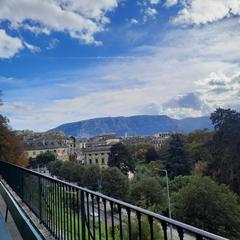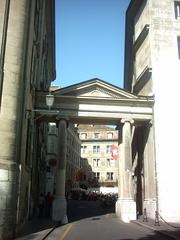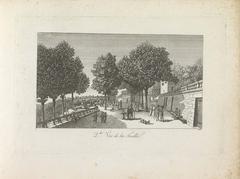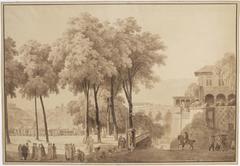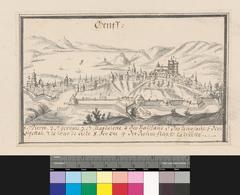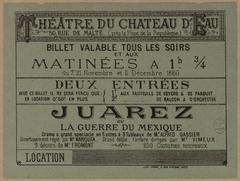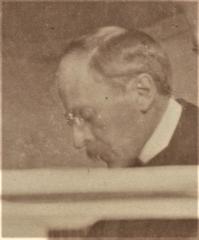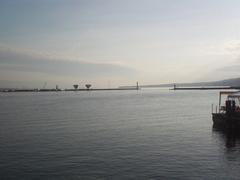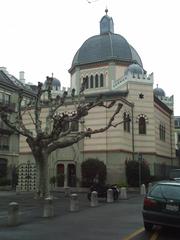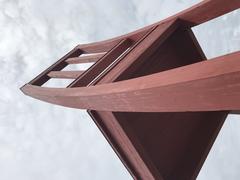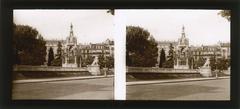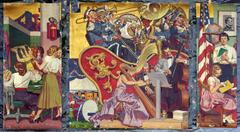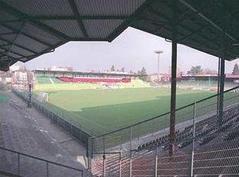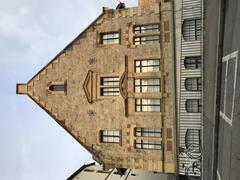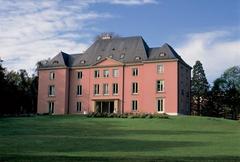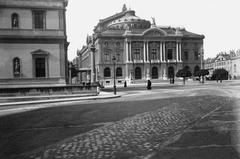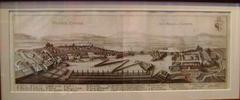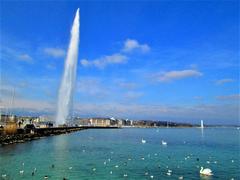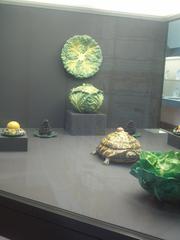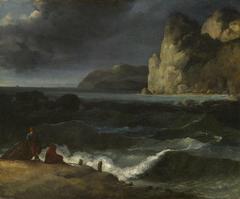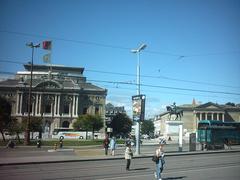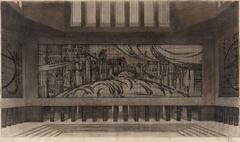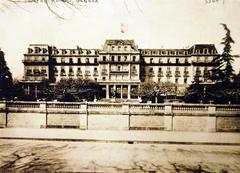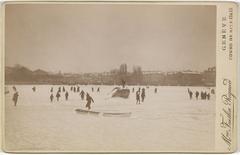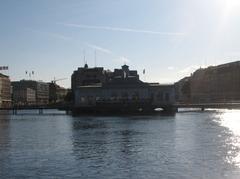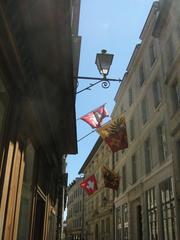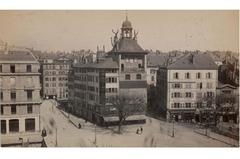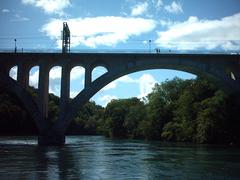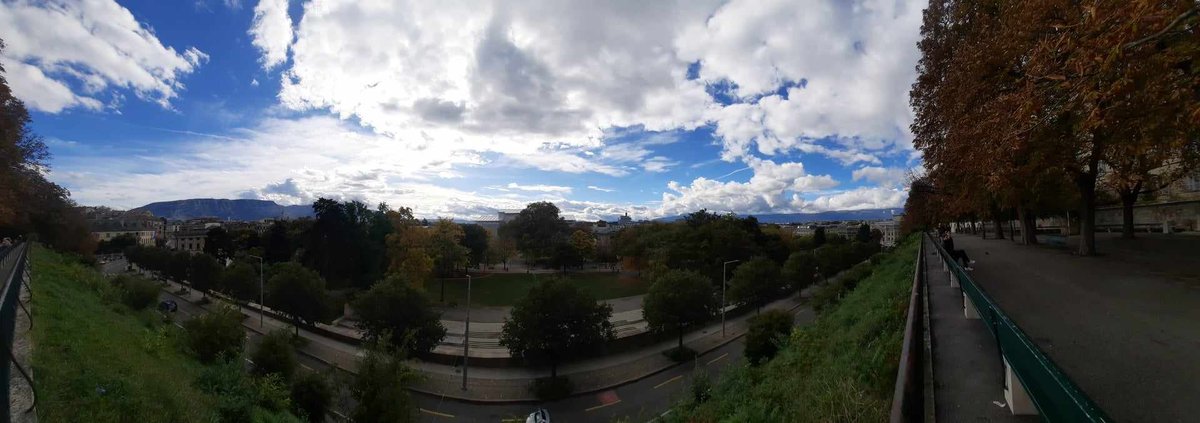
Comprehensive Guide to Visiting Promenade de la Treille, Geneva, Switzerland
Date: 24/07/2024
Introduction
The Promenade de la Treille, located in the heart of Geneva’s Old Town, is a remarkable blend of historical significance and natural beauty. This scenic public walkway has witnessed pivotal moments in Geneva’s history and offers visitors an opportunity to step back in time while enjoying panoramic views and a serene environment. Originating from the medieval era, the promenade was initially part of the city’s fortifications, playing a strategic role in Geneva’s defense. Over time, it evolved into a leisure space, symbolized by the world’s longest wooden bench, which stands as a testament to Geneva’s innovation and tradition (geneve.ch). The promenade’s transformation reflects the city’s journey from a fortified stronghold to a hub of cultural and social activities. The Promenade de la Treille also holds a unique place in Geneva’s religious history, having been a focal point during the Reformation led by John Calvin. Today, it continues to be a beloved gathering place for locals and tourists alike, offering a blend of historical insights, cultural events, and natural beauty (explorial.com). This guide provides comprehensive information about visiting the Promenade de la Treille, including its history, visiting hours, travel tips, and nearby attractions, ensuring that visitors can make the most of their experience in this iconic Geneva landmark.
Table of Contents
- [Introduction](#introductionintroduction)
- [Historical Background of Promenade de la Treille](#historical-background-of-promenade-de-la-treillehistorical-background-of-promenade-de-la-treille)
- [Medieval Origins and Strategic Importance](#medieval-origins-and-strategic-importancemedieval-origins-and-strategic-importance)
- [Transformation into a Leisure Space](#transformation-into-a-leisure-spacetransformation-into-a-leisure-space)
- [Role in Geneva’s Religious Transformation](#role-in-genevas-religious-transformationrole-in-genevas-religious-transformation)
- [The Marronnier Officiel](#the-marronnier-officielthe-marronnier-officiel)
- [Architectural and Cultural Significance](#architectural-and-cultural-significancearchitectural-and-cultural-significance)
- [Visiting Information](#visiting-informationvisiting-information)
- [Visiting Hours](#visiting-hoursvisiting-hours)
- [Entry Fee](#entry-feeentry-fee)
- [Travel Tips](#travel-tipstravel-tips)
- [Events and Celebrations](#events-and-celebrationsevents-and-celebrations)
- [Nearby Historical Attractions](#nearby-historical-attractionsnearby-historical-attractions)
- [FAQ](#faqfaq)
- [Conclusion](#conclusionconclusion)
- [Call to Action](#call-to-actioncall-to-action)
Historical Background of Promenade de la Treille
Medieval Origins and Strategic Importance
The Promenade de la Treille has a history dating back to the medieval period. Initially, this area was part of Geneva’s fortifications, constructed when the city was emerging as an independent municipality. Around 1515, during the Battle of Marignan, the promenade was created as a platform to facilitate the defense of nearby government buildings (geneve.ch). The strategic height and position of the promenade made it ideal for military purposes, including the installation of cannons in 1555, providing an unobstructed view over the suburbs and surrounding countryside (explorial.com).
Transformation into a Leisure Space
By the 16th century, the Promenade de la Treille evolved from a military stronghold into a place of leisure. This transformation began around 1767 when the promenade was redesigned to include the world’s longest wooden bench, measuring 120 meters. This bench, constructed by architect Samuel Vaucher, became a symbol of Geneva’s blend of tradition and innovation (theculturetrip.com). The promenade’s name, “Treille,” is derived from the espaliers of vines that adorned the area during this period, reflecting its shift towards a more peaceful and communal space (geneve.ch).
Role in Geneva’s Religious Transformation
The Promenade de la Treille also played a significant role in Geneva’s religious history. In 1536, it was a key location during the city’s conversion to Protestantism under John Calvin’s leadership. This period marked a transformative era for Geneva, as the promenade became a gathering place for political discussions and socializing, reflecting the city’s evolving identity (explorial.com).
The Marronnier Officiel
One of the unique historical features of the Promenade de la Treille is the “Marronnier Officiel,” an official chestnut tree used since 1808 to predict the arrival of spring in Geneva. The first bud of this tree is regularly reported by the press, making it a beloved local tradition and a symbol of the city’s connection to nature and seasonal change (travalour.com).
Architectural and Cultural Significance
The promenade is flanked by significant architectural landmarks, including the Hôtel-de-Ville and the ramparts overlooking Parc des Bastions. These structures add to the area’s aesthetic appeal and serve as reminders of Geneva’s historical and cultural heritage. The promenade’s location along Rue de la Croix-Rouge, bordering Place Neuve, positions it at the heart of Geneva’s historical and cultural landscape (explorial.com).
Visiting Information
Visiting Hours
The Promenade de la Treille is open to the public 24/7, making it an accessible destination for both early risers and night owls. However, it’s best enjoyed during daylight hours to fully appreciate its historical and natural beauty.
Entry Fee
There is no entry fee for visiting the Promenade de la Treille. It is a public space open to everyone.
Travel Tips
- Best Time to Visit - Spring and summer are ideal for visiting the promenade, as the greenery is at its most vibrant, and the weather is pleasant.
- Accessibility - The promenade is wheelchair accessible, with paved paths and benches for resting.
- Photography - The promenade offers stunning views over the Old Town roofs towards St Pierre Cathedral and Mont Blanc, making it a perfect spot for photography.
Events and Celebrations
The Promenade de la Treille hosts various events and celebrations throughout the year. Notably, it features concerts during the Fête de la Musique and the traditional Sechseläuten celebration, marking the end of winter. These events highlight the promenade’s ongoing role as a central gathering place for locals and tourists alike (explorial.com).
Nearby Historical Attractions
Located in Geneva’s Old Town, the Promenade de la Treille is close to many other significant landmarks and attractions. These include St Peter’s Cathedral, Maison Tavel (the oldest house in Geneva, now a museum), and Place du Bourg-de-Four, known for its charming terraces and fountains (travalour.com). Additionally, the nearby Parc des Bastions is home to the Reformation Wall, which portrays major figures of the Reformation in the form of statues and bas-reliefs, further enriching the historical context of the area (travalour.com).
FAQ
What are the opening hours of Promenade de la Treille? The promenade is open 24/7, allowing visitors to explore at any time.
Is there an entry fee for Promenade de la Treille? No, the promenade is free to visit.
What is the best time to visit Promenade de la Treille? Spring and summer offer the best experience due to the vibrant greenery and pleasant weather.
Conclusion
The Promenade de la Treille is a beautiful public walkway and a historical landmark that encapsulates Geneva’s past and present. From its origins as a military fortification to its transformation into a leisure space and its role in significant religious and cultural events, the promenade offers a unique glimpse into the city’s rich history. Its enduring appeal and historical significance make it a must-visit destination for anyone seeking to understand and appreciate the heritage of Geneva.
Call to Action
Plan your visit to the Promenade de la Treille today and immerse yourself in the rich history and serene beauty of this iconic Geneva landmark. For more information on Geneva’s historical sites and travel tips, download our mobile app Audiala and follow us on social media.
References
- Promenade de la Treille, 2024, City of Geneva (geneve.ch)
- Promenade de la Treille Sights, 2024, Explorial (explorial.com)
- The Top 10 Things to See and Do in Geneva’s Old Town, 2024, The Culture Trip (theculturetrip.com)
- Promenade de la Treille, 2024, Travalour (travalour.com)
- Promenade de la Treille, 2024, Lebendige Traditionen (lebendige-traditionen.ch)
- Promenade de la Treille, 2024, Thrillophilia (thrillophilia.com)
- Bench and Treille Promontory, 2024, Geneve Tourisme (geneve.com)
- Best Things to Do in Geneva, Switzerland, 2024, The Planet D (theplanetd.com)
- Fun Things to Do in Geneva, Switzerland, 2024, Travel Awaits (travelawaits.com)

